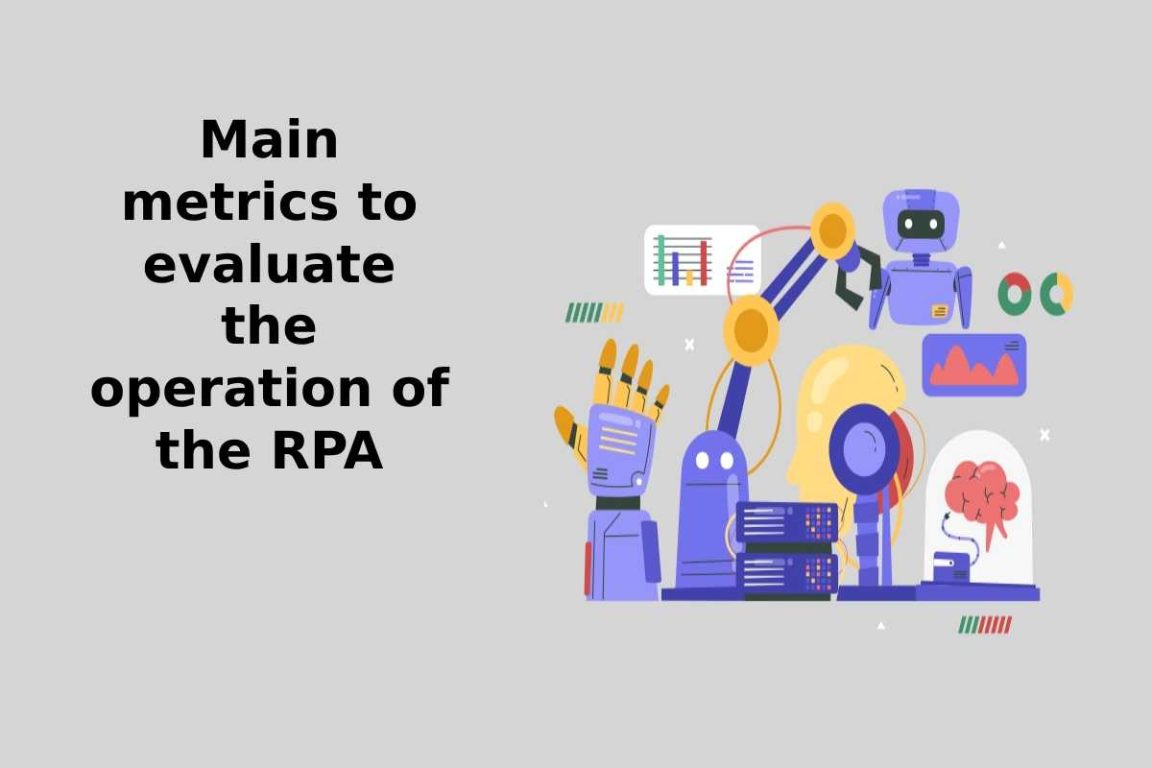As with any activity, tool and process that is carried out within the organization, it is necessary for your IT work team to carry out a periodic evaluation of your RPA (robotic process automation) systems so that you as an entrepreneur you can determine if the implementation of this technological solution is meeting the efficiency and productivity objectives you want. Through the measurement and analysis of key metrics, it is possible to obtain an summary of the impact that process automation has on your business, taking the study as a basis for making long-term strategic decisions.
In order for you to carry out this evaluation correctly, in this newdigitalhub note we will explain in broad strokes what RPA is and we will share the details of some of the main methods to measure its efficiency. If you are interested in maximizing the return on investment in this technology and getting a real benefit for your company, keep reading!
RP: what is it?
RPA (Robotic Procedure Automation) is a technology that allows optimizing business processes through the use of robots or “bots” that perform tasks autonomously. These bots can interact with applications and information systems in the same way as a person, executing various tasks that are usually tedious and of limited value for daily operations such as data entry, transaction processing, record updating. , writing reports, among others.
The main objective of RPA is to improve efficiency and reduce human errors in repetitive and regulated business processes , allowing companies to save time and money, while their employees focus on higher value-added tasks.
What metrics exist to assess RPA performance?
Now, so that you can ensure that you get all of these benefits that we mentioned and many more, it is important that you consider and apply the following metrics to evaluate the productivity of your software:
Execution time
One of the most important advantages that RPA offers is the speed and level of efficiency with which it performs its tasks. Contrary to a normal collaborator, the bot can work 24/7, 365 days a year, without breaks and without setbacks. This, of course, is a huge competitive benefit, as long as the software demonstrates adequate runtime. To evaluate it, it is necessary to measure the time that elapses from when the bot starts working on a task until it completes it. This can be done by recording the start and end time of the process to later calculate the difference between the two (employee and technological tool). If the bot is faster (as usual), the quality and productivity of this technology in your company will be guaranteed.
Error rate
Another of the reasons that drive us to use this technological solution is the reduction of the margin of error. On a day-to-day basis, it is normal for our employees to make certain mistakes that, unfortunately, by the end of the month translate into large extra expenses that should never have occurred. To reduce this value, the bots play a fundamental role, since they work based on very precise parameters and instructions, which allow them to practically eliminate any possibility of error.
In order for you to check if your RPA software is capable of reaching that point, you must use “error rate”, a type of metric through which it is possible to determine the number of mistakes that a bot can make during the implementation. execution of a process or task. To calculate it, it is necessary to count the number of mistakes made during a certain period of time and divide it by the total number of tasks executed during that same period of time. The error rate is expressed as a percentage. For example, if the tool performs 100 tasks and makes 10 errors, its error rate would be 10%.
Efficiency level
Efficiency is a factor that with RPA is 100% assured. The bots are designed to work tirelessly and almost perfectly, allowing you to obtain higher quality results than what a normal employee can often offer you. Now, if you want to measure how true this statement is, you simply have to measure the level of efficiency that your bots currently manage.
Keep in mind that for this technique you must keep in mind the relationship between time and resources used by the software to complete an activity in terms of cost and time. To carry it out, you just have to measure the time and resources used by the bot and then divide that figure by the total cost of the task. For example, if the software uses 10 hours and $100 in resources to complete a task that costs $500, its efficiency would be 80%.
Scalability potential
Businesses and customer expectations vary enormously with each passing day, which is why it is necessary for each company to have a high degree of adaptability in order to stay ahead of the industry’s needs. To achieve this goal, it is also possible to use RPA, a technology that allows you to increase or decrease the workflow as appropriate. However, for you to prove its scalability, you need to measure the ability of your RPA software to handle a larger number of processes or tasks without a decrease in efficiency or quality.
To do this, you simply gradually increase the number of tasks assigned to the bot and see how it responds. If it is able to complete them quickly and accurately without a drop in efficiency, then it is considered scalable.
Now that you know what it is, what advantages RPA offers you, and how you can measure its performance, what are you waiting for to adopt this state-of-the-art technology in your operation? At newdigitalhub , as experts in process automation, we are ready to provide you with a complete service through which you can considerably enhance the productivity and profitability of your company. Do not hesitate and contact us!



